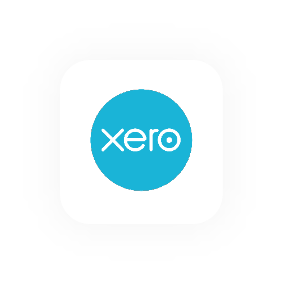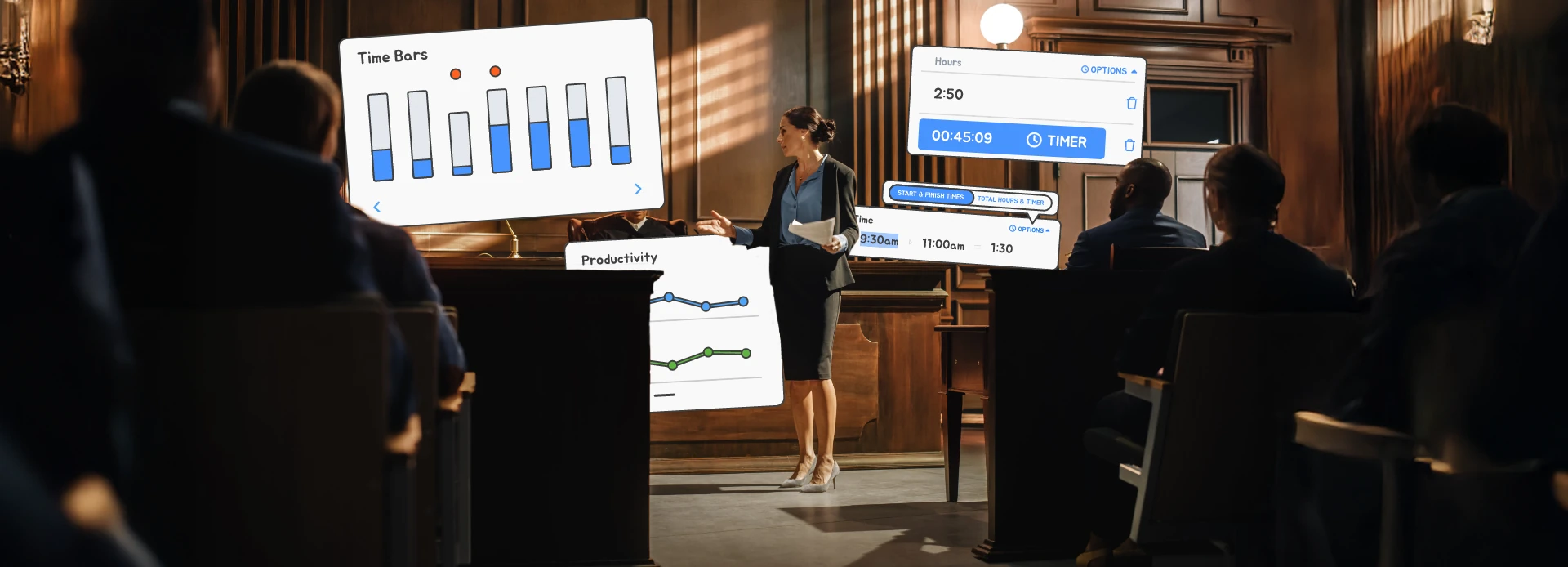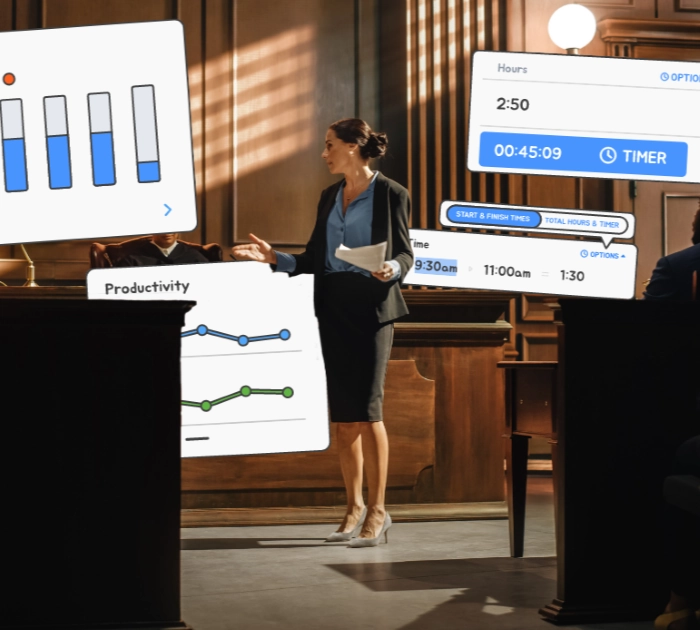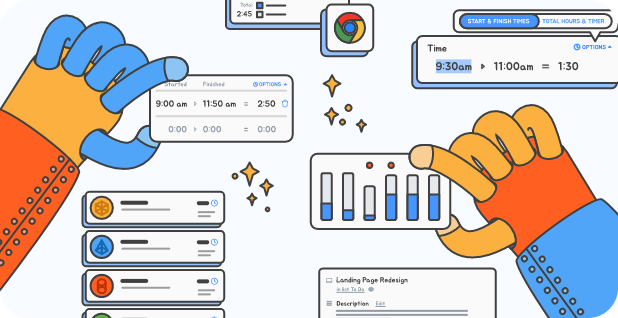How Lawyers Track Time
How do lawyers track their time in 2025?
Ask any attorney: time is money — quite literally. Law firms still live and die by their billable hours, typically selling their expertise in blocks of 6, 15 or 30-minute blocks. Yet for lawyers in 2025, time tracking is no longer just about billing clients. It’s a holistic practice that helps to improve transparency, efficiency and client relationships. With today’s technology, every minute spent on phone calls, research, drafting, client work, or administrative tasks can be captured precisely, helping to streamline all areas of your firm.
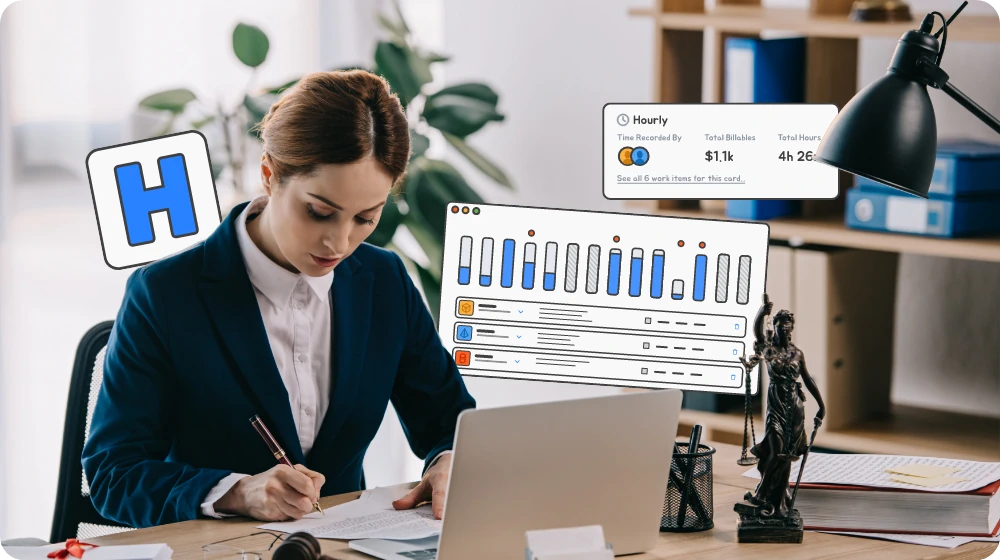
Let’s explore how lawyers used to track billable hours, what’s changed in the digital era, and how modern platforms like Hourly are helping lawyers track billable hours efficiently without losing focus on the work that matters most.
Traditional time tracking methods
Before laptops and mobile apps, traditional time tracking methods in law firms were rudimentary. Many lawyers relied on manual time tracking, jotting time entries on notepads, paper forms, or even sticky notes. Secretaries would later input these records into basic billing systems — often at the end of the day, when memory had already blurred.
This approach came with predictable downsides:
- Human error — when recalling how much time was spent on a client call or meeting hours later.
- Inaccurate time tracking, leading to disputes over invoices or even lost revenue.
- A heavy administrative burden, as staff had to manually enter data and generate invoices.
Back then, tracking billable hours accurately was as much art as science. Lawyers often underestimated their own billable time, or forgot to include non-billable hours like travel or case preparation.
Even with the introduction of early billing software, the time tracking process remained largely manual. Many law firms used spreadsheets or basic databases to calculate billable hours, but these tools couldn’t capture real time tracking or project progress across multiple clients.
The 2000s: The rise of digital billing and early tracking software
By the early 2000s, tracking software began to take shape. Specialized legal software offered integrated practice management and billing software, allowing firms to log time entries digitally rather than on paper.
This was the birth of legal time tracking software, though it still required manual data entry. Lawyers had to log hours at the end of the day, often guessing at what their billable and non billable time looked like.
The benefits were clear — generate detailed reports, generate invoices, and reduce paperwork — but accuracy was still an issue. Not all lawyers embraced these systems, preferring pen and paper or email notes to “capture time” retroactively.
Many lawyers spend significant portions of their week performing administrative tasks rather than legal analysis. According to Clio’s Legal Trends Report, lawyers track less than three billable hours a day on average, despite working over eight — showing just how much potential billable work is lost to inefficiencies.
The 2010s-2020: Cloud, automation, and mobility
The explosion of cloud computing changed everything. By the late 2010s, time tracking tools became more sophisticated, accessible, and automated.
Law firms began adopting cloud-based management software that combined practice management, billing systems, and time tracking software in one place. Lawyers could now create time entries directly from calendar events, email integrations, or even client calls — dramatically improving accurate billing and reducing inaccurate time entries.
The best time tracking methods began incorporating automation. Automated time tracking and automatic time tracking tools could record time spent in emails, document editing, or video calls — capturing activity passively.
These systems offered valuable insights into lawyers’ billable hours, non billable time, and overall productivity. Many also featured mobile apps, allowing legal professionals to capture time on the go — during phone calls, at court, or in client meetings — helping lawyers track billable hours efficiently.
Still, one question persisted: how accurate is “automatic” tracking when every case is unique?
2025: How lawyers track time now
In 2025, time tracking for lawyers is both smarter and simpler than ever — but the challenge of managing billable hours remains.
Modern legal professionals use an ecosystem of integrated tools:
- AI-assisted time tracking software that automatically suggests time entries based on your work activity.
- Mobile apps that sync seamlessly across devices.
- Legal time tracking software embedded within practice management systems to tie billable hours directly to cases, clients, and invoices.
Key features of modern time tracking software
- Real-time tracking: Real-time tracking ensures that every minute of billable time and non-billable hours are logged as they happen — no more guessing at the end of the day.
- Automatic data capture: Some platforms monitor document editing, calls, or messages to automatically capture time for review before logging.
- Integrated billing process: Today’s billing software makes it possible to generate invoices directly from time tracking data, minimizing billing disputes and improving accurate billing.
- Detailed reporting and analytics: Lawyers can now generate detailed reports showing billable hours charts, billable and-non billable time, and project progress — offering valuable insights into workload balance and profitability.
- Cross-platform accessibility: Whether on desktop, tablet, or mobile, lawyers track time from anywhere — even during client calls or travel.
These advances have made accurate time tracking more attainable, but they’ve also exposed new challenges: data overload, over-automation, and the need to balance transparency with privacy.
How many billable hours should lawyers work?
This question — how many billable hours should a lawyer work per year? — remains at the heart of billing practices. Many law firms still set targets of 1,800 to 2,000 legal billable hours annually. But as non-billable hours like training, firm meetings, or pro bono work continue to expand, achieving those numbers can be tough.
That’s why accurate time tracking tools matter. They help lawyers track every minute of legal work performed, while separating billable and non-billable time clearly — reducing confusion and supporting fair workload management.
Even with all these tools, inaccurate time tracking can still creep in if lawyers track billable hours inconsistently. Forgetting to log hours, rounding up, or missing client calls can cause both lost revenue and strained relationships.
The human factor: Why tracking still fails
Despite all the technology, inaccurate time tracking still plagues the legal industry. The reasons are surprisingly human:
- Time consuming entry processes discourage consistency.
- Manual data entry still occurs when tools aren’t intuitive.
- Not all lawyers trust automated systems with sensitive legal time data.
- Busy professionals forget to track time spent on small interactions, like quick phone calls or impromptu client work.
awyers leave tracking until the end of the day, they risk forgetting crucial details or underestimating the time spent. Multiply that across a firm, and it leads to substantial lost revenue and inaccurate reporting.
Why accuracy matters: Billing, clients and ethics
Accurate billing isn’t just about profit — it’s about professionalism. Clients deserve transparency into how lawyers bill, how billable hours are calculated, and how their money is spent on legal services.
Misreported or padded time entries can lead to billing disputes, damaged reputations, and even disciplinary action. On the other hand, under-billing diminishes profitability and undervalues valuable billable time.
Modern tools help eliminate human error by offering automated time tracking that logs time spent in emails, case files, and research tools — ensuring accurate invoices and reducing friction with clients.
The future of legal time tracking software
The next frontier for lawyer time tracking lies in integration and intelligence.
AI will continue transforming time tracking tools by analyzing time tracking data for valuable insights into efficiency, bottlenecks, and profitability. Imagine a billable hours chart that doesn’t just record activity but predicts which client work generates the most value or where administrative tasks drain billable time.
Soon, tracking practices will merge with performance analytics, showing how lawyers spend their days, how quickly matters progress, and where billable and non-billable time intersect.
The end goal isn’t just to track billable hours efficiently, but to help firms understand and optimize how time is used — a move toward smarter, data-driven firm operations.
Why lawyers are switching to Hourly
This is where Hourly steps in — a simple yet powerful time tracking software that’s perfect for law firms seeking clarity without complexity.
While many legal time tracking software platforms overwhelm users with features, Hourly focuses on what matters: accurate time tracking, ease of use, and flexibility. It’s a tool that lawyers track time with — not one that gets in the way of their work.
Here’s how lawyers can use Hourly:
- Capture time in seconds:
Whether you’re reviewing documents, on client calls, or meeting over coffee, Hourly lets you capture time on any device — desktop or mobile apps — with just a few taps. No manual data entry required. - Track time spent and billable hours:
Hourly helps lawyers track billable hours and non-billable time separately, giving you a clear billable hours chart at a glance. You can instantly see your billable and non-billable ratio, making it easier to calculate billable hours accurately. - Generate detailed reports and invoices:
With built-in analytics, lawyers can generate detailed reports and generate invoices that clients trust — helping eliminate billing disputes and ensuring accurate billing every time. - Transparency and trust:
Hourly doesn’t use invasive monitoring. There’s no screen capture or GPS — just clean, transparent time tracking that enhances trust between firms and clients. - Seamless for teams:
Hourly isn’t just for individuals. Entire law firms can monitor project progress, standardize tracking practices, and ensure every time entry is consistent and compliant.
The Hourly advantage: Simplicity meets accuracy
With Hourly, lawyers can track time, improve accurate billing, and eliminate guesswork. It’s designed to reduce the administrative burden and time consuming manual processes that plague older billing systems.
Imagine finishing a busy day of legal services and already having your time tracking data neatly categorized, synced, and ready for review — no more scribbling notes at the end of the day.
Hourly’s goal is to make accurate time tracking second nature. Whether you bill hourly or flat-rate, it ensures your lawyer’s hourly rate is reflected precisely in your invoices, giving clients confidence and firms profitability.
Time, trust and technology
So — how do lawyers track their time in 2025? The answer is both old and new. The fundamentals remain — every minute counts — but the methods are evolving rapidly.
While early traditional time tracking methods relied on memory and manual entry, today’s tracking software brings automation, analytics, and accessibility to the forefront. Yet the goal hasn’t changed: to track billable hours accurately, build client trust, and make every second of legal time count.
Hourly represents the next step in that evolution — a tool designed for legal professionals who want to spend less time tracking and more time practicing law. With Hourly, you can reclaim valuable billable time, reduce lost revenue, and maintain transparency across your billing process.
Because in law — as in life — how you spend your time defines your success.



